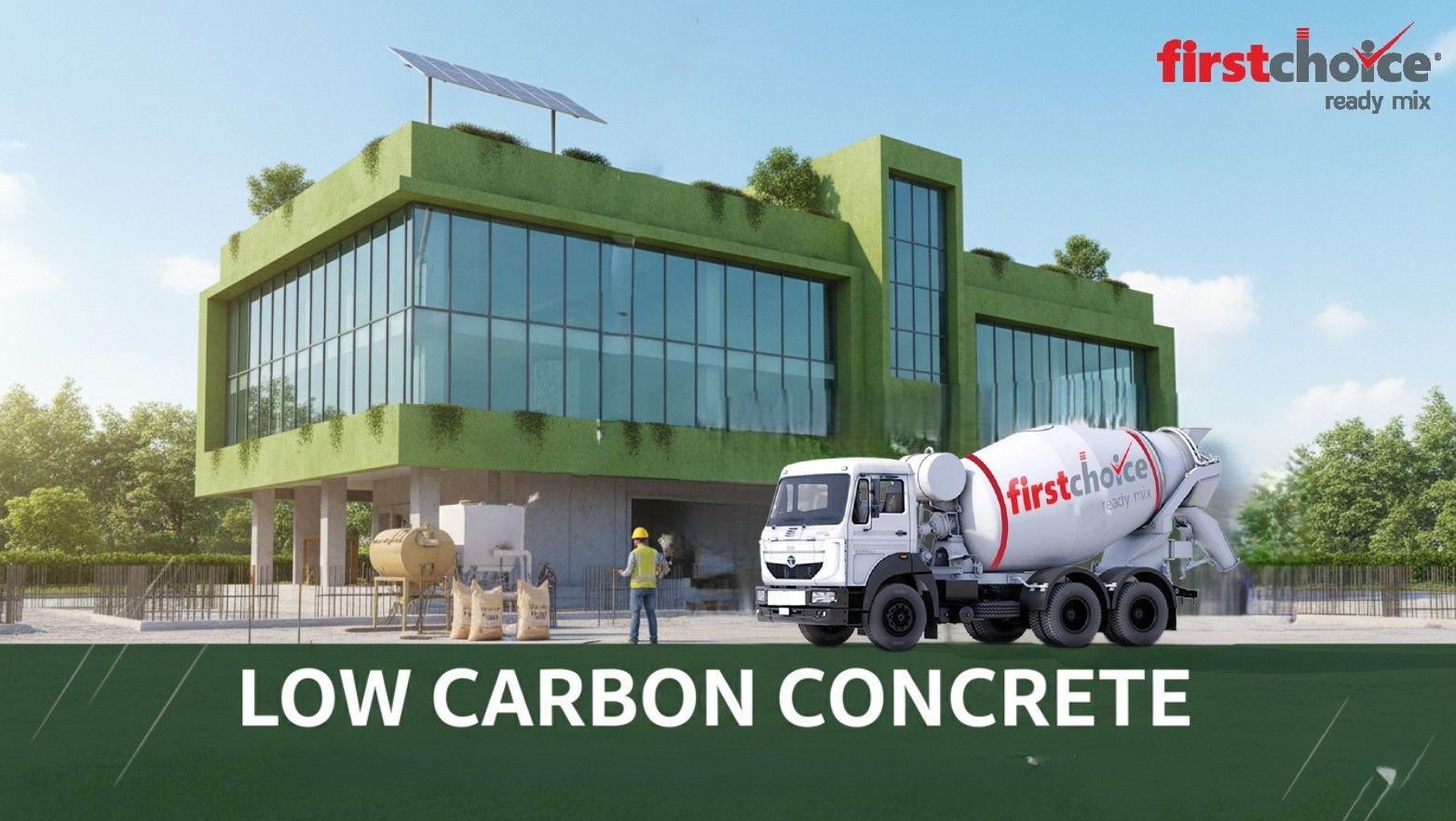Low Carbon Concrete: Building a Sustainable Future with Firstchoice Readymix

As the world races to combat climate change, the construction industry is under pressure to reduce its environmental footprint. Concrete, the backbone of modern infrastructure, is a major contributor to global carbon emissions, accounting for roughly 8% of the total. At Firstchoice Readymix, we’re committed to revolutionizing construction with innovative solutions like low carbon concrete. This eco-friendly alternative not only supports sustainability but also delivers high performance for real estate projects. In this post, we’ll dive into what low carbon concrete is, how it works, and why it’s a game-changer for greener building.
What Is Low Carbon Concrete?
Low carbon concrete is designed to significantly reduce the carbon dioxide emissions associated with traditional concrete production. Standard concrete relies heavily on cement, particularly Portland cement, which is energy-intensive to produce and releases substantial CO2 during manufacturing. Low carbon concrete tackles this issue by incorporating alternative materials, optimized production processes, and advanced admixtures that maintain strength and durability while slashing emissions.
At Firstchoice Readymix, our low carbon concrete blends use supplementary cementitious materials (SCMs) like fly ash, slag, or silica fume, which are byproducts of other industries. These materials partially replace cement, cutting down on the carbon-intensive component while enhancing the concrete’s properties.
Why Low Carbon Concrete Matters
The environmental impact of traditional concrete is staggering. Producing one ton of cement releases nearly a ton of CO2, driven by the energy needed to heat limestone in kilns and the chemical reactions involved. With global urbanization accelerating, the demand for concrete is only growing, making low carbon alternatives critical for sustainable development. By choosing low carbon concrete, developers can align with global climate goals, such as those outlined in the Paris Agreement, and meet stricter local regulations, like India’s push for greener construction under the National Building Code. Beyond compliance, it’s a chance to lead the industry toward a more sustainable future while delivering high-quality projects.
How Low Carbon Concrete Works
Creating low carbon concrete involves several strategies to minimize environmental impact without compromising performance:
Using Supplementary Cementitious Materials (SCMs): Materials like fly ash and slag reduce the amount of cement needed, lowering emissions while improving concrete’s long-term strength and durability.
Optimizing Mix Designs: Advanced admixtures from Firstchoice Readymix allow for precise concrete formulations that use less cement while maintaining workability and performance.
Recycled Aggregates: Incorporating recycled materials, such as crushed concrete from demolished structures, reduces the need for virgin resources and minimizes waste.
Energy-Efficient Production: Partnering with suppliers who use renewable energy or carbon capture technologies during cement production further cuts emissions.
These innovations ensure that low carbon concrete performs as well as—or better than—traditional mixes, making it suitable for everything from residential buildings to infrastructure projects.
Benefits for Real Estate Projects
Switching to low carbon concrete offers a host of advantages for developers, investors, and end-users:
Environmental Impact: By reducing emissions, low carbon concrete helps projects achieve green certifications like LEED or IGBC, enhancing their marketability and appeal to eco-conscious buyers.
Cost Savings Over Time: While initial costs may be comparable to traditional concrete, the long-term savings come from increased durability and lower maintenance needs. SCMs often improve resistance to cracking and corrosion, extending the lifespan of structures.
Market Differentiation: In a competitive real estate market, sustainable features set projects apart. Properties built with low carbon concrete attract environmentally aware tenants and buyers, often commanding premium prices or faster sales.
Regulatory Compliance: With governments offering incentives like tax breaks or expedited permits for sustainable construction, low carbon concrete helps developers stay ahead of the curve.
Real-World Applications
Low carbon concrete is already making waves in real estate and infrastructure. From high-rise buildings to bridges and roads, developers are using it to meet sustainability goals without sacrificing quality. For example, commercial complexes built with our low carbon mixes at Firstchoice Readymix have achieved significant reductions in embodied carbon while maintaining structural integrity. These projects not only lower environmental impact but also resonate with tenants who prioritize green living.
Challenges and Solutions
Despite its benefits, adopting low carbon concrete can come with challenges. Some developers worry about availability or higher upfront costs. However, as demand grows, SCMs and recycled materials are becoming more accessible, and economies of scale are driving costs down. At Firstchoice Readymix, we work closely with clients to tailor solutions that balance sustainability and budget, ensuring seamless integration into any project. Another concern is performance, but rigorous testing shows that low carbon concrete can meet or exceed industry standards for strength and durability. Our advanced admixtures enhance workability, making it easy for contractors to adopt without changing their processes.
A Step Toward Greener Construction
Low carbon concrete is more than a trend—it’s a vital step toward a sustainable future for real estate. By reducing emissions, enhancing durability, and appealing to eco-conscious markets, it delivers value at every stage of a project’s lifecycle. At Firstchoice Readymix, we’re here to help you embrace this innovation, offering solutions that align with your sustainability goals and project needs. Let’s build stronger, greener, and smarter—together.